Do you have a question about the Craftsman 580.750900 and is the answer not in the manual?
Displays model number and other identification details.
Provides helpline number and operating hours for assistance.
Details the manufacturer's two-year limited warranty against defects.
Outlines the advantages and services included in the protection plan.
Provides crucial general safety guidelines before operation.
Explains hazard symbols and signal words used in the manual.
Warns about the dangers of poisonous engine exhaust gases.
Alerts users to risks associated with handling chemicals and detergents.
Advises on the dangers of rapid starter cord retraction.
Highlights the severe danger of contact with electrical sources.
Warns about the cutting potential of high-pressure water.
Details flammability and explosion risks associated with fuel.
Alerts to potential ignition and burn risks from hot exhaust components.
Warns about falling hazards from wet surfaces created by operation.
Alerts to risks of fire or shock from unintended sparks.
Warns about entanglement risks with moving engine parts.
Advises on protection against spray splash and propelled objects.
Cautions against tampering with engine speed settings.
Introduction to familiarizing oneself with the machine's layout.
Labels and describes the main parts and controls of the unit.
Steps for removing the unit from its packaging.
Guidance on verifying all included parts are present.
Step-by-step instructions for putting the unit together.
Specific steps for installing the handle and accessory tray assembly.
Information about the integrated detergent siphoning system.
Details on connecting the siphon hose to the pump.
Instructions for connecting the siphon to a detergent bottle.
Step-by-step guide for adding the correct engine oil.
Instructions for adding the correct type of fuel to the tank.
Guidance on fuel requirements for operation at high altitudes.
Explains the significance of lubricating O-rings for proper function.
Details the steps for applying lubricant to various connection points.
Guide to connecting the high-pressure hose and garden hose.
A list of pre-operation checks to ensure readiness.
Advises on safe placement and carbon monoxide risks.
Specifies minimum clearance distances to prevent fire hazards.
Initial steps for starting the engine and unit.
Detailed steps for starting the engine, including primer use.
Critical safety warning regarding the recoil starter operation.
Instructions for safely shutting down the engine and unit.
Guidance on storing spray gun, extension, and tips.
Explains different spray patterns and how to swap tips.
Provides best practices for effective cleaning with spray tips.
Details on how to apply detergent using the unit's system.
Steps for rinsing surfaces after cleaning or applying detergent.
Procedure for cleaning the detergent siphoning tube after use.
Explains how the system prevents pump damage from overheating.
Provides details on the engine model, emissions, and certifications.
Clarifies how engine power ratings are determined and affected.
Lists key technical specifications for the pressure washer and engine.
Outlines the user's role in maintaining the unit.
Details maintenance requirements for emissions control components.
Lists daily checks and cleaning tasks for the pressure washer.
Instructions for cleaning the unit and removing accumulated debris.
Procedure for inspecting and cleaning the water inlet screen.
Guidance on checking the high-pressure hose for damage or leaks.
Steps to inspect and clean the detergent siphoning tube.
Instructions to free a stuck check ball in the detergent system.
How to inspect and test the spray gun and nozzle extension.
Advice on cleaning spray tips to prevent pressure issues.
Information on maintaining O-rings using a repair kit.
Guidance on selecting the correct oil viscosity based on temperature.
Procedure for verifying the engine oil level.
Steps for filling the engine with oil, including overfill caution.
Instructions for draining and replacing the engine oil.
Steps for cleaning or replacing the engine's air filter element.
Guide for inspecting, gap checking, and replacing the spark plug.
Instructions for checking the muffler and spark arrester for damage.
Advises on keeping cooling fins clear of debris for proper function.
Notes that the carburetor is factory set and limits on user adjustment.
Steps to follow after each use to prevent damage and ensure readiness.
Steps to protect the unit from freezing temperatures.
Guidance for preparing the unit for storage over 30 days.
How to treat fuel to prevent gum formation during storage.
Recommends changing oil before storing the unit.
Advises using PumpSaver to protect the pump during storage.
General advice for covering and storing the unit.
Lists causes and solutions for low or erratic pump pressure.
Addresses problems with the detergent not mixing with the spray.
Explains why the engine might bog down when under load.
Covers common causes for the engine failing to start or running rough.
Identifies a dirty air filter as a cause for reduced engine power.
Diagram and list of parts for the main pressure washer unit.
Lists parts not shown in the main exploded view.
Lists available optional accessories not included with the unit.
Lists components and service kits for the pump assembly.
Lists pump parts not shown in the exploded view.
Lists optional accessories for the pump.
Details the components of the 358 engine gasket set.
Diagram showing the first set of engine internal components.
Diagram illustrating another section of engine internal components.
Diagram showing further engine components like carburetor and fuel tank.
A comprehensive list of part numbers and descriptions for the engine.
Explains the owner's and manufacturer's rights and responsibilities.
Details the scope of the warranty for emissions-related parts.
Outlines the owner's duty to maintain the unit as per the manual.
Specific terms and conditions of the emissions control warranty.
Lists the specific parts covered under the emissions warranty.
Specifies the duration of the emissions control system warranty.
Clarifies warranty coverage for parts needing scheduled maintenance.
Details conditions that void the warranty or are not covered.
Explains how to find emissions durability periods and air index data.
Displays model number and other identification details.
Provides helpline number and operating hours for assistance.
Details the manufacturer's two-year limited warranty against defects.
Outlines the advantages and services included in the protection plan.
Provides crucial general safety guidelines before operation.
Explains hazard symbols and signal words used in the manual.
Warns about the dangers of poisonous engine exhaust gases.
Alerts users to risks associated with handling chemicals and detergents.
Advises on the dangers of rapid starter cord retraction.
Highlights the severe danger of contact with electrical sources.
Warns about the cutting potential of high-pressure water.
Details flammability and explosion risks associated with fuel.
Alerts to potential ignition and burn risks from hot exhaust components.
Warns about falling hazards from wet surfaces created by operation.
Alerts to risks of fire or shock from unintended sparks.
Warns about entanglement risks with moving engine parts.
Advises on protection against spray splash and propelled objects.
Cautions against tampering with engine speed settings.
Introduction to familiarizing oneself with the machine's layout.
Labels and describes the main parts and controls of the unit.
Steps for removing the unit from its packaging.
Guidance on verifying all included parts are present.
Step-by-step instructions for putting the unit together.
Specific steps for installing the handle and accessory tray assembly.
Information about the integrated detergent siphoning system.
Details on connecting the siphon hose to the pump.
Instructions for connecting the siphon to a detergent bottle.
Step-by-step guide for adding the correct engine oil.
Instructions for adding the correct type of fuel to the tank.
Guidance on fuel requirements for operation at high altitudes.
Explains the significance of lubricating O-rings for proper function.
Details the steps for applying lubricant to various connection points.
Guide to connecting the high-pressure hose and garden hose.
A list of pre-operation checks to ensure readiness.
Advises on safe placement and carbon monoxide risks.
Specifies minimum clearance distances to prevent fire hazards.
Initial steps for starting the engine and unit.
Detailed steps for starting the engine, including primer use.
Critical safety warning regarding the recoil starter operation.
Instructions for safely shutting down the engine and unit.
Guidance on storing spray gun, extension, and tips.
Explains different spray patterns and how to swap tips.
Provides best practices for effective cleaning with spray tips.
Details on how to apply detergent using the unit's system.
Steps for rinsing surfaces after cleaning or applying detergent.
Procedure for cleaning the detergent siphoning tube after use.
Explains how the system prevents pump damage from overheating.
Provides details on the engine model, emissions, and certifications.
Clarifies how engine power ratings are determined and affected.
Lists key technical specifications for the pressure washer and engine.
Outlines the user's role in maintaining the unit.
Details maintenance requirements for emissions control components.
Lists daily checks and cleaning tasks for the pressure washer.
Instructions for cleaning the unit and removing accumulated debris.
Procedure for inspecting and cleaning the water inlet screen.
Guidance on checking the high-pressure hose for damage or leaks.
Steps to inspect and clean the detergent siphoning tube.
Instructions to free a stuck check ball in the detergent system.
How to inspect and test the spray gun and nozzle extension.
Advice on cleaning spray tips to prevent pressure issues.
Information on maintaining O-rings using a repair kit.
Guidance on selecting the correct oil viscosity based on temperature.
Procedure for verifying the engine oil level.
Steps for filling the engine with oil, including overfill caution.
Instructions for draining and replacing the engine oil.
Steps for cleaning or replacing the engine's air filter element.
Guide for inspecting, gap checking, and replacing the spark plug.
Instructions for checking the muffler and spark arrester for damage.
Advises on keeping cooling fins clear of debris for proper function.
Notes that the carburetor is factory set and limits on user adjustment.
Steps to follow after each use to prevent damage and ensure readiness.
Steps to protect the unit from freezing temperatures.
Guidance for preparing the unit for storage over 30 days.
How to treat fuel to prevent gum formation during storage.
Recommends changing oil before storing the unit.
Advises using PumpSaver to protect the pump during storage.
General advice for covering and storing the unit.
Lists causes and solutions for low or erratic pump pressure.
Addresses problems with the detergent not mixing with the spray.
Explains why the engine might bog down when under load.
Covers common causes for the engine failing to start or running rough.
Identifies a dirty air filter as a cause for reduced engine power.
Diagram and list of parts for the main pressure washer unit.
Lists parts not shown in the main exploded view.
Lists available optional accessories not included with the unit.
Lists components and service kits for the pump assembly.
Lists pump parts not shown in the exploded view.
Lists optional accessories for the pump.
Details the components of the 358 engine gasket set.
Diagram showing the first set of engine internal components.
Diagram illustrating another section of engine internal components.
Diagram showing further engine components like carburetor and fuel tank.
A comprehensive list of part numbers and descriptions for the engine.
Explains the owner's and manufacturer's rights and responsibilities.
Details the scope of the warranty for emissions-related parts.
Outlines the owner's duty to maintain the unit as per the manual.
Specific terms and conditions of the emissions control warranty.
Lists the specific parts covered under the emissions warranty.
Specifies the duration of the emissions control system warranty.
Clarifies warranty coverage for parts needing scheduled maintenance.
Details conditions that void the warranty or are not covered.
Explains how to find emissions durability periods and air index data.
| Engine Type | Gasoline |
|---|---|
| Pump Type | Axial Cam |
| Hose Length | 25 ft |
| Nozzle Included | Yes |
| Soap Applicator | Yes |
| Wheel Type | Pneumatic |
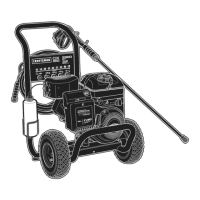
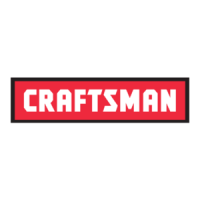
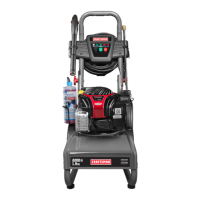
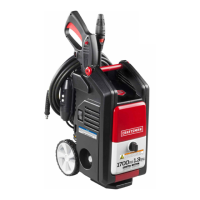
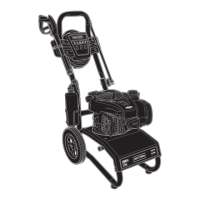

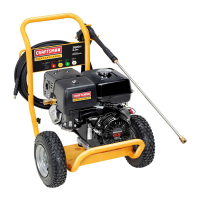
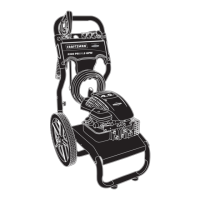

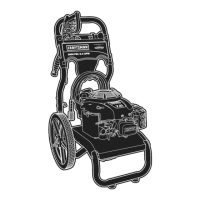
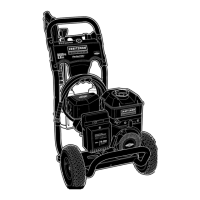
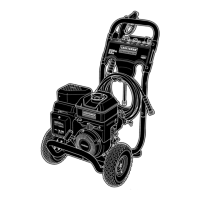
